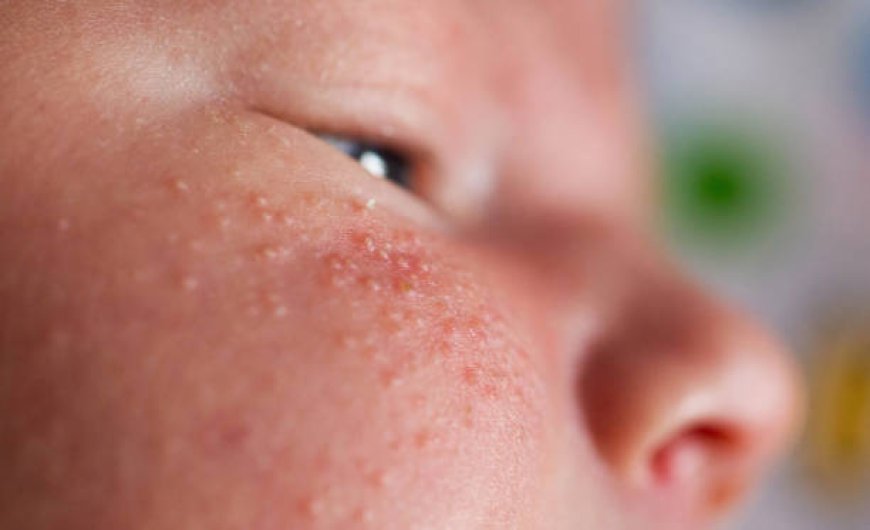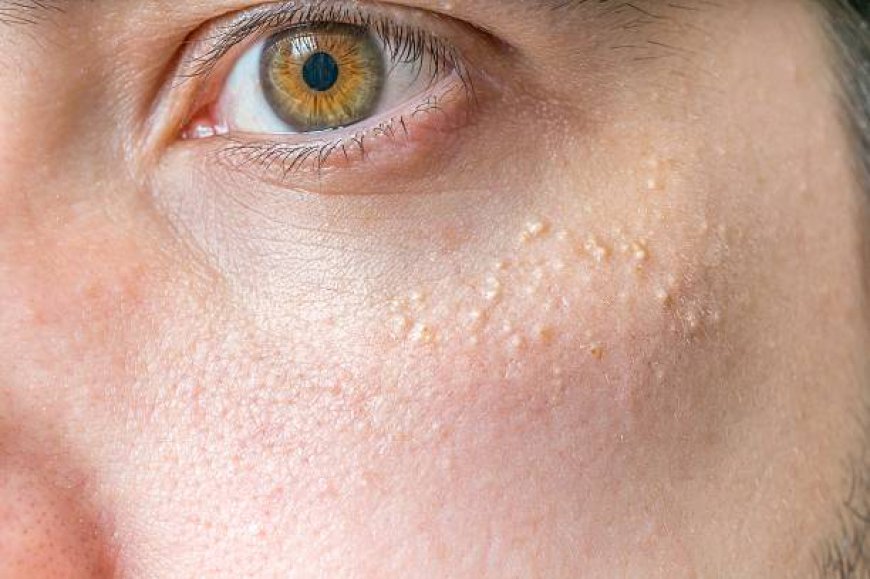Milia Removal Techniques and Prevention Tips in Riyadh
Milia are small, white cysts that typically appear on the skin, often resembling tiny pearls. They are caused by the buildup of keratin, a protein found in skin cells, trapped beneath the surface. Commonly found on the face, particularly around the eyes, cheeks, and forehead, milia are harmless and painless. These cysts can occur in individuals of all ages, from newborns to adults. While they often resolve on their own, many seek treatment for cosmetic reasons. Milia are distinct from acne and do not cause redness or inflammation.

Milia are small, white, keratin-filled cysts that commonly appear on the face, particularly around the eyes and cheeks. While they are generally harmless, many people seek treatment for cosmetic reasons. In Riyadh, various Milia Treatment in Riyadh options are available, ranging from simple home remedies to professional treatments. This blog aims to provide an in-depth look at effective milia removal techniques and preventive measures to help you maintain smooth skin.

Understanding Milia
Milia are tiny, white bumps that often resemble acne but are quite different in composition and formation. They occur when keratin, a protein found in the skin, becomes trapped beneath the surface.
Causes of Milia
- Skin Damage: Sun exposure, burns, or injury can lead to milia formation.
- Genetics: Some people are more prone to developing milia due to their genetic makeup.
- Use of Heavy Skincare Products: Thick creams or ointments can clog pores, contributing to milia.
Different Types of Milia
- Primary Milia: These are the most common type, often seen in newborns but can also appear in adults.
- Secondary Milia: These develop after skin trauma, such as blistering or skin conditions like eczema.
Milia Treatment Options in Riyadh
When it comes to Milia Treatment in Riyadh, various methods are available, each catering to different skin types and preferences. Here are some effective removal techniques.
Home Remedies
-
Exfoliation: Regular exfoliation can help prevent the buildup of dead skin cells that can lead to milia. Using gentle scrubs or chemical exfoliants containing alpha-hydroxy acids (AHAs) can promote skin cell turnover.
-
Steam Treatments: Steaming your face can open up pores, making it easier to remove milia. After steaming, gently exfoliate the skin to help dislodge the cysts.
-
Topical Retinoids: Over-the-counter retinoids can promote cell turnover and prevent milia formation. Applying these products regularly can improve skin texture and reduce the occurrence of milia.
Professional Treatments
-
Lance and Drain: A common professional technique involves using a sterile needle to lance the milia and drain the contents. This procedure is quick and effective but should only be performed by a trained professional to avoid scarring.
-
Cryotherapy: This treatment involves freezing the milia with liquid nitrogen, causing the cysts to fall off over time. Cryotherapy is effective and typically requires a few sessions.
-
Laser Treatments: Laser technology can target milia effectively without damaging surrounding skin. This method is ideal for those looking for a quick and precise removal option.
-
Chemical Peels: A chemical peel involves applying a solution to exfoliate the top layers of skin. This treatment can help in reducing milia and improving overall skin texture.
Choosing the Right Treatment
When considering Milia Treatment in Riyadh, it’s essential to evaluate your skin type and the severity of your milia. Consulting with a skincare professional can help determine the best course of action based on individual needs.
Prevention Tips
While treatment options are essential, prevention is crucial for minimizing the recurrence of milia. Here are some practical tips to help you maintain milia-free skin.
Maintain a Proper Skincare Routine
-
Gentle Cleansing: Use a mild cleanser to avoid irritating the skin. Harsh products can strip the skin of its natural oils and contribute to milia formation.
-
Moisturize Wisely: Opt for lightweight, non-comedogenic moisturizers that won't clog pores. Look for products labeled as "oil-free" or "non-acnegenic."
-
Sunscreen: Protecting your skin from UV rays is vital. Use a broad-spectrum sunscreen daily to prevent skin damage that could lead to milia.
Avoid Heavy Makeup
Using thick, heavy makeup can trap oils and dead skin cells, leading to milia formation. Consider using mineral makeup or products specifically designed for sensitive skin to reduce the risk.
Regular Exfoliation
Incorporate regular exfoliation into your skincare routine. Aim for 1-2 times a week, depending on your skin type. Chemical exfoliants like AHAs or BHAs can be particularly effective.
Stay Hydrated
Drinking plenty of water helps maintain skin hydration and elasticity. Well-hydrated skin is less prone to issues like milia.
Regular Dermatological Checkups
Having regular skin checkups can help catch and address skin issues before they develop further. A skincare professional can provide personalized recommendations for maintaining healthy skin.
Myths About Milia
There are several misconceptions surrounding milia that can lead to confusion about their treatment and prevention.
Milia are Only for Babies
Many people believe that milia only occur in infants. While primary milia are common in newborns, adults can also develop them, especially after skin damage or injury.
Milia are Caused by Poor Hygiene
While proper hygiene is essential for skin health, milia are not directly caused by dirt or lack of cleansing. Instead, they result from trapped keratin under the skin's surface.
Popping Milia at Home is Safe
Attempting to pop milia at home can lead to scarring or infection. It’s best to consult with a professional for safe and effective removal.
Conclusion
Dealing with milia can be frustrating, but with the right knowledge and treatments, you can achieve smoother, healthier skin. Understanding the different types of milia and their causes is the first step toward effective Milia Treatment in Riyadh. By incorporating preventive measures into your skincare routine, you can minimize the risk of recurrence and enjoy clear, radiant skin. Always consult with skincare professionals for personalized advice and treatment options tailored to your needs.
Whether you choose home remedies or professional treatments, the key is to maintain consistency in your skincare routine and prioritize prevention. With the right approach, you can keep milia at bay and achieve the flawless complexion you desire.

 maria3211
maria3211